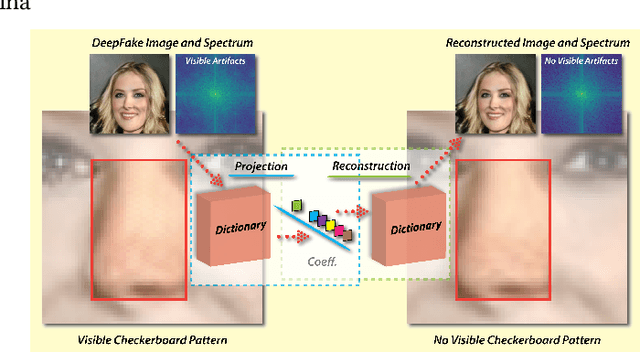FakePolisher: Making DeepFakes More Detection-Evasive by Shallow Reconstruction
Paper and Code
Jun 13, 2020



The recently rapid advances of generative adversarial networks (GANs) in synthesizing realistic and natural DeepFake information (e.g., images, video) cause severe concerns and threats to our society. At this moment, GAN-based image generation methods are still imperfect, whose upsampling design has limitations in leaving some certain artifact patterns in the synthesized image. Such artifact patterns can be easily exploited (by recent methods) for difference detection of real and GAN-synthesized images. To reduce the artifacts in the synthesized images, deep reconstruction techniques are usually futile because the process itself can leave traces of artifacts. In this paper, we devise a simple yet powerful approach termed FakePolisher that performs shallow reconstruction of fake images through learned linear dictionary, intending to effectively and efficiently reduce the artifacts introduced during image synthesis. The comprehensive evaluation on 3 state-of-the-art DeepFake detection methods and fake images generated by 16 popular GAN-based fake image generation techniques, demonstrates the effectiveness of our technique.
 Add to Chrome
Add to Chrome Add to Firefox
Add to Firefox Add to Edge
Add to Edge